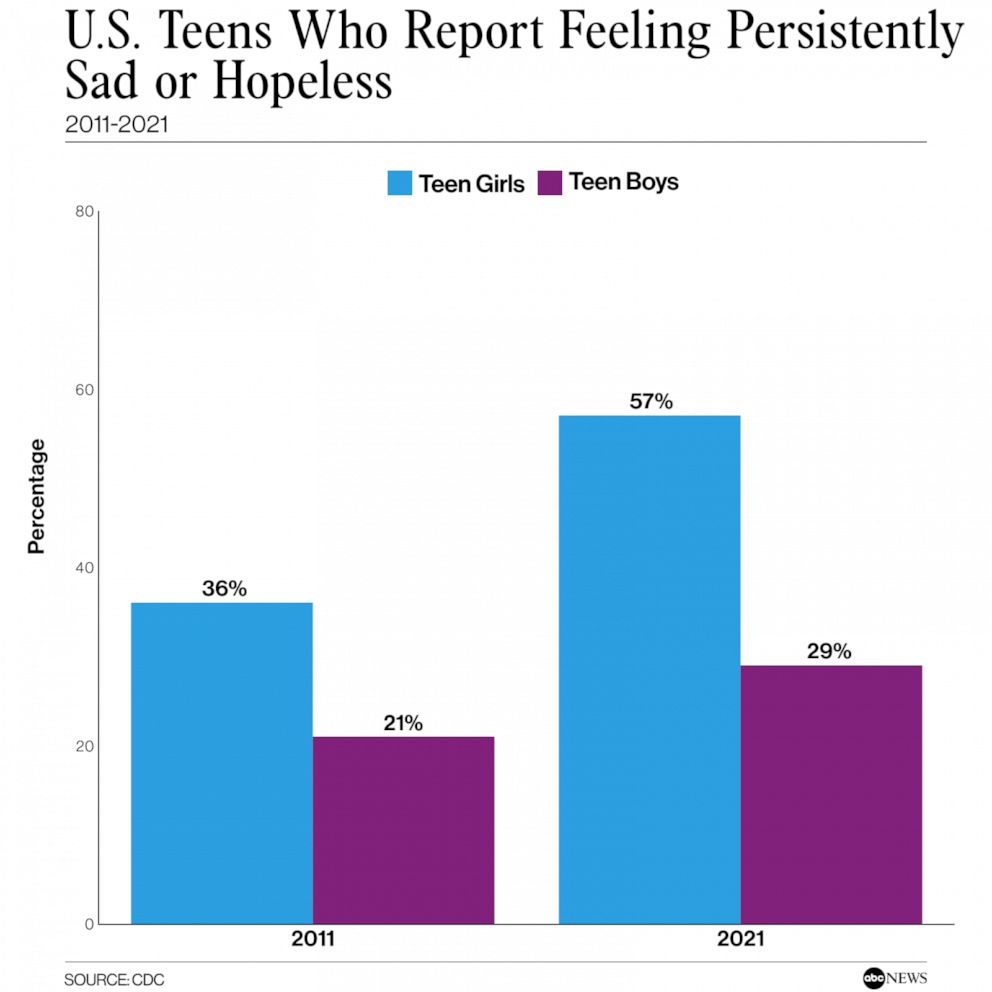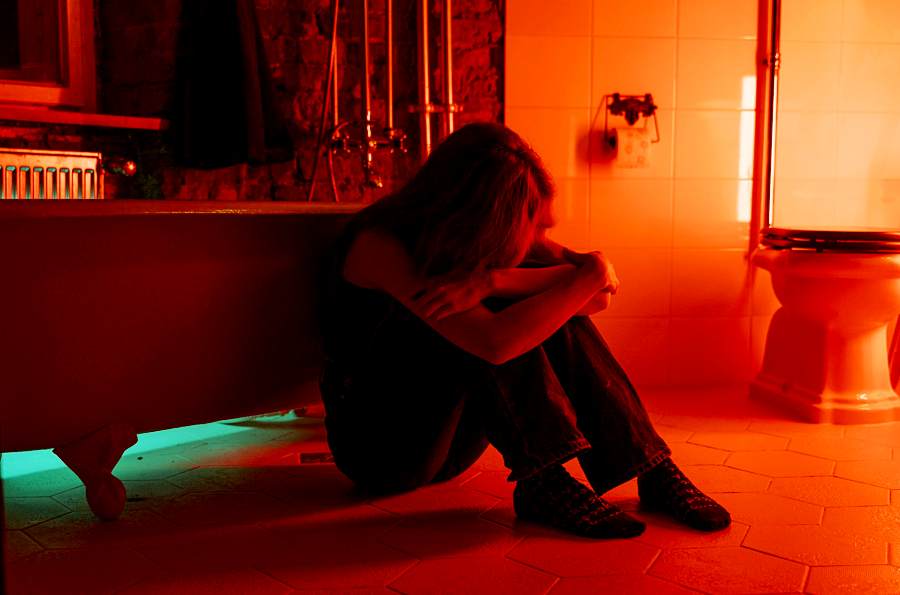Tue 14 February 2023:
Sexual attacks and other traumatic experiences have led to an unprecedented level of hopelessness and suicidal thoughts among America’s young women, the Centers for Disease Control and Prevention reported Monday.
“Our teenage girls are suffering through an overwhelming wave of violence and trauma, and it’s affecting their mental health,” said Kathleen Ethier, director of the CDC’s Division of Adolescent and School Health, NBC News reported.
Results from the CDC’s 2021 Youth Risk Behavior Survey show startling trends. Nearly 3 in 5 teen girls (57%) said they felt “persistently sad or hopeless”.
That’s the highest rate in a decade. And 30% said they have seriously considered dying by suicide — a percentage that’s risen by nearly 60% over the past 10 years.
“As a parent to a teenage girl, I am heartbroken. As a public health leader, I’m driven to act,” the CDC’s Chief Medical Officer, Dr. Debra Houry, said at an unusually emotional briefing Monday.
The survey, which has been conducted every other year for three decades, includes responses from 17,232 US high school students.
Overall, more than 40% of boys and girls said that they’d felt so sad or hopeless within the past year that they were unable to do their regular activities, such as schoolwork or sports, for at least two weeks. When researchers looked at gender differences, girls were far more likely to report such feelings than boys.

“It was so striking to us, the consistency with which girls were faring more poorly than boys,” Ethier said.
At least 52% of teenagers who identified as gay, lesbian, bisexual or questioning said they struggled with mental health. (The survey did not ask whether a person was transgender.)
LGBTQ kids “experience much more interpersonal stress from schools, from peers and from home, unfortunately,” Julie Cerel, a licensed psychologist and director of the Suicide Prevention & Exposure Lab at the University of Kentucky, told NBC News.
The CDC survey found that more than 1 in 5 such youth — 22% — had attempted suicide within the past year. Stigma and violence toward LGBTQ teenagers largely contributed to their poor mental health.
Indeed, a dramatic rise in violent behavior, targeting girls in particular, was a stark finding in the CDC report. One such assault received national attention this month when Adriana Kuch, 14, was attacked as she walked down a high school hallway in New Jersey. Video of the incident was posted online in an attempt to “make fun” of her, Kuch’s father said.
Kuch died by suicide days later.
Among the teenagers surveyed, girls were more likely to experience sexual violence, the CDC found. Eighteen percent of girls in high school said they experienced sexual violence in the past year, compared with 15% in 2017, the first year the CDC began monitoring this trend. Fourteen percent of teenage girls reported being forced to have sex when they did not want to, up from 12% in 2011, the CDC said.
“This is truly alarming,” said Dr. Ethier. “For every 10 teenage girls you know, at least one of them, and probably more, has been raped.”
Houry recounted Monday a time when, as an emergency room physician, she treated a college student who had been sexually assaulted.
“She was embarrassed and thought she hadn’t done enough to stop it,” Houry said.
The survey also found that alcohol use continues to decline, with 23% of high school students saying they drank alcohol in the prior 30 days in 2021, compared with 39% in 2011. Only 16% said they currently use marijuana, compared with 23% in 2011. About 12% said they had ever misused prescription opioids, down from 14% in 2019 and 2017, the first year opioid use was included in the report.
The survey did not ask students about reasons for their feelings of sadness or thoughts of harming themselves. While anxiety and depression increased among teens during the pandemic, the trends, especially among girls, have been building for years.
Signs of a problem can be subtle, especially because it’s normal for teens to act moody or pull away from their families during adolescence. Houry suggested asking teenagers about any unusual changes in eating and sleeping habits.
It’s critical to normalize conversations about mental health and give young people tools to handle crises before they happen, said Cerel, who was not involved in the CDC report.
Cerel calls the strategy “universal safety planning.”
“The idea is that everyone needs to be ready for their worst day,” she said.
Houry advised parents to be as involved as possible.
“Know who their friends are. Know who those friends’ parents are,” Houry said.
The CDC report calls for more programs in schools, such as sex ed, to address the ongoing and growing mental health crisis.
“We suggest that our schools start by educating their staff and their families all what mental health is, what supports are available and how they can access their services,” said Anna King, president of the National PTA, who was part of the briefing Monday. She also called on Congress to target funding toward kids who have suffered traumas.
Cerel said that with limited funding, schools are ill-equipped to do more.
“It’s a lot to ask schools with teachers who are underpaid and not necessarily trained” to address the wave of mental health problems, she said, adding, “What we’ve been doing hasn’t been working.”
NEWS AGENCIES
___________________________________________________________________________________________________________________________________
FOLLOW INDEPENDENT PRESS:
TWITTER (CLICK HERE)
https://twitter.com/IpIndependent
FACEBOOK (CLICK HERE)
https://web.facebook.com/ipindependent
Think your friends would be interested? Share this story!





